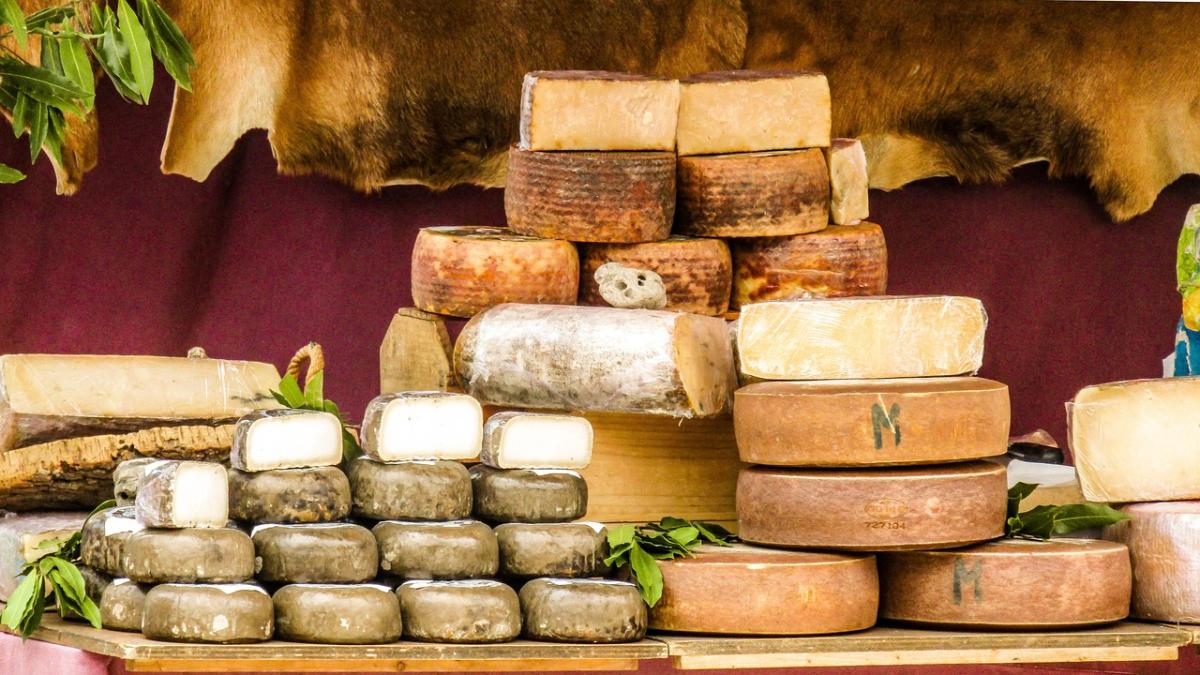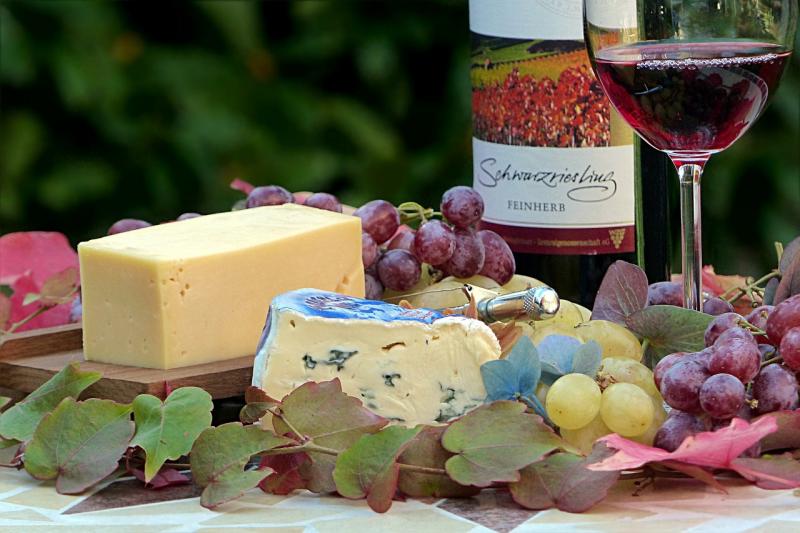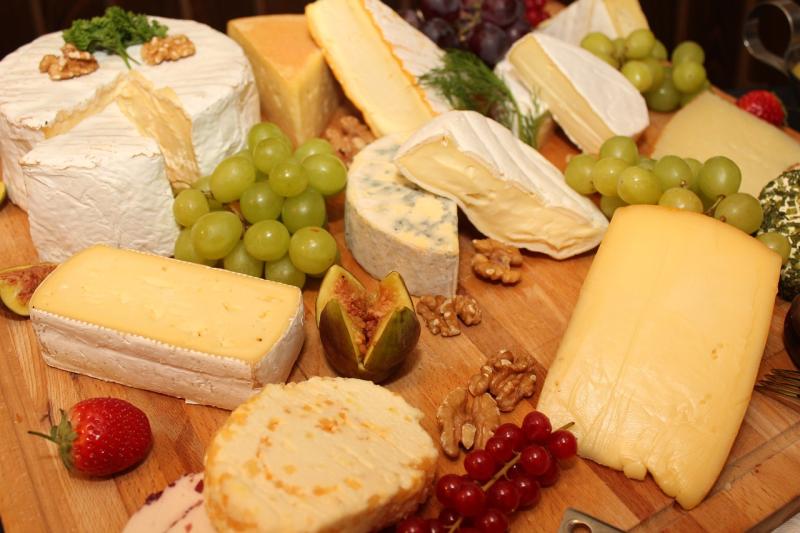Cheese has been part of human culture for thousands of years. Evidence suggests cheese was first made by Accadians in the Middle East. It then spread throughout Europe and Asia, and was perfected by the Romans. Since then, many different varieties of cheese have been developed. This article will take a dive into the history of cheese and explore the many different types of this delicious food.
Early Cheese Making
Cheese is believed to have been discovered around 8000 BC in the Middle East. Before this discovery, milk was stored in containers made of animal stomachs and it was discovered that the milk curdled in these containers. It became the basis for the first cheese. The knowledge of cheese making spread quickly from the Middle East and eventually made its way to both Europe and the Mediterranean.
Early on in Europe, cheese was an extremely valuable food as it was able to be stored for long periods of time before it went bad. Women were often tasked with making cheese, and it was also a commodity sold in markets throughout medieval Europe.
Cheese making would continue to develop in Europe over the next few centuries. Different techniques of production, such as using certain molds and herbs, developed in various parts of the continent. During the 1700s, cheese making began to spread to the New World in North America.
Ancient Cheese
Cheesemaking dates back thousands of years. Ancient records reveal that cheese was first made by the Sumerians in Mesopotamia around 5,000 BC. Other ancient cultures that made cheese include the Egyptians, Greeks, Romans, and Gauls.
Cheese-making began to spread across Europe in the Early Middle Ages, though it remained a local tradition, with each village and region having its own special cheese varieties. By the 16th and 17th centuries, cheese-making had become an art form.
During the Industrial Revolution of the 19th century, cheese-making technologies changed dramatically. Cheesemakers became increasingly specialized, and cheesemaking became an even more refined science.
Introduction to Western Europe
Since dairy farming began in Europe over 8,000 years ago, cheese has played an integral part in the continent's history and culture. Western European countries such as France, Italy, and Switzerland are renowned for their cheese production, thanks to the area's abundance of grass to feed cows and other milk-bearing animals, as well as its long tradition of cheese-making.
Cheese traditions vary from country to country and region to region. France, for example, is well known for many different types of cheese, from tangy Camembert to creamy Boursault and of course the delicious Roquefort. Many of France's cheese-making methods are centuries old, making it one of the most important cheese-producing nations in Europe.
Italy is a popular destination for cheese lovers, and many of these beloved cheeses like Parmigiano Reggiano and Gorgonzola have been around since the Middle Ages. Not to be overlooked, Switzerland is also known for its delicious Alpine cheeses, such as the aged Raclette and Emmental. All of these cheeses, and more, can be found around the continent.
As you can see, Western Europe has had a long and colorful cheese-making history. From its unique geographical conditions to its array of traditional cheeses, this area is a treasure trove of cheese-making knowledge. From this region of the world, cheese has spread around the world, touching lives in distant corners of the globe.
Cheese in Ancient Rome
The ancient Romans were big fans of cheese. They used specially designed utensils for slicing, grating and storing cheese, as well as for enjoying cheese in meals. Roman bakers allegedly increased the appeal of their bread by using grated cheese.
Cheesemaking seems to have been an established part of the Roman diet by the 2nd century B.C., and the colonists spread their cheese-making techniques to the lands they conquered. The Romans had cheese recipes including soft, semi-soft and hard varieties, as well as a variety of recipes that used different types of cheese such as ricotta, mozzarella, parmesan and pecorino romano.
Roman author Apicius mentioned over 30 cheeses in his De re coquinaria, a collection of Roman recipes, including recipes for cheesecake, cheese-stuffed dormice and a hot cheese dip. Apicius was so passionate about cheese that he instructed his chefs to prepare the best cheese and ensure it arrived to him in the most perfect condition.
Development of Medieval Cheese
The art of cheese-making had its roots in the Middle Ages. It was around this time that dairy farming became important in Europe, and cheese-making was also beginning to take shape. The development of cheese in this era saw an increase in production as it was in demand across Europe. Innovative farmers used a variety of processes such as lactic acid fermentation, salt curing, and using rennet to turn milk into cheese.
The earliest records of cheese-making date back to the 7th century when British monks developed a method for creating small round cheeses. However, it wasn’t until the 11th century that cheese-making began to take off. Cheese production was so popular during this period of time that the demand for it continued to grow.
During the 12th and 13th centuries, cheese-making had grown to be a major industry in Europe. Different varieties were being produced, including hard and soft cheeses. Much of the production was done on farms and monarchs began to tax the sale of cheese. Regulations were put into place to ensure the quality of the product and by the 14th century there were hundreds of different varieties of cheeses available.
The development of cheese in the Middle Ages was responsible for the many varieties we know today. Cheese-makers experimented with different techniques and the result was a wide range of tasty cheeses that can be enjoyed across the globe.
Renaissance Cheese
In the Renaissance period, cheese became quite popular. Cheese making had been around for centuries, but the art of master cheese makers was perfected during this period.
Cheese making during this era relied heavily on local resources such as animals, crops and climate; each region across Europe had their own individual flavor and texture of cheese. Animal-milk like sheep, goats and cows was used, while raw cows’ milk cheese was being made as well.
During the 16th century, cheese factories began to be built and cheese-making became an organized business. In some parts of Europe, farmers used cow’s milk to make a variety of soft cheeses such as Brie, Roquefort and Gouda. As time went on, the public’s taste for certain types of cheese increased and farmers needed to respond to the particular demands.
The making of Pecorino cheese was popular during the Renaissance and is still made today in Italy. It is made from sheep’s-milk, spontaneously fermented with natural bacteria. Views from the period on cheese also included information about how to use it, including recipes for dishes with cheese and even medicinal applications for it to cure certain illnesses.
Towards the end of the 16th century, American immigrants began to bring cheese- making traditions from Europe to the New World. Cheese-making steadily continued to develop in the following centuries, leading to the variety of flavors and textures we see today.
Cheese in Colonial America
Cheese has been a staple food for centuries. Cheese is thought to have been consumed in the United States since the colonial era, with records of colonists producing cheese as early as 1607.
Early colonists produced many types of cheese, such as cheddar, Swiss, and Gouda. These cheeses were mostly made from cows’ milk, but some colonists also raised goats and sheep and made cheese from their milk as well. Cheese was used for food, for medicinal purposes, and for shipping to various parts of the world to trade and sell.
Colonial Americans produced a variety of traditional cheeses, some of which are still being made today. One of the most popular cheeses was cheddar, produced by colonists in Massachusetts and Connecticut. The cheese was aged for several months and then cut into blocks, salted, and stored in dry caves or cellars.
The flavour of Colonial era cheeses were quite different from what we are used to today. Many varieties were quite strong and pungent, with a powerful flavor, due to the traditional methods of cheese production. For example, many cheeses were dry-salted, which gave the cheese a firm texture and a robust flavor.
Cheese production in the American colonies continued until after the Revolutionary War, but it was not as common as it had been in the earlier years. Cheese making gradually diminished and began to be replaced commercially by cheese from Europe and other regions.
Modern Cheese Artisans
As technology and new techniques have become available, cheese artisanship has experienced a resurgence in recent years. Modern cheese artisans produce cheese with high levels of quality and flavor that can rival products of their predecessors. Artisanal producers use a variety of traditional techniques, and some even use modern methods such as vacuum packaging to ensure the freshness and distinctive taste of the product.
This attention to detail and quality has made artisanal cheese a sought-after commodity in restaurants, specialty shops, and markets around the world. Many modern cheese artisans have become pioneering forces in the industry, utilizing progressive techniques and marketing tools to create award-winning products.
By utilizing technologies such as cryo-vacuum packaging, cheese artisans can make sure their products remain fresh and flavorful for a long period of time. By combining traditional knowledge with modern processes, artisanal cheese makers are able to produce unique and flavorful cheeses that stand out from the crowd. With more people becoming aware of the quality and care that the artisanal cheese maker brings to the process, the art of cheese making is sure to endure for many more years to come.
Conclusion
The history of cheese is incredibly fascinating and wide-reaching. It has certainly come a long way since its first use in the olden days. Cheese-making has been an ever-evolving passion for people for centuries and continues to be enjoyed in homes and restaurants around the world today. We have seen the development of amazing innovative recipes and processes, as well as traditional methods, which still contribute to the amazing variety of delicious cheese that is available to us. The art of cheese-making is truly one of a kind.



